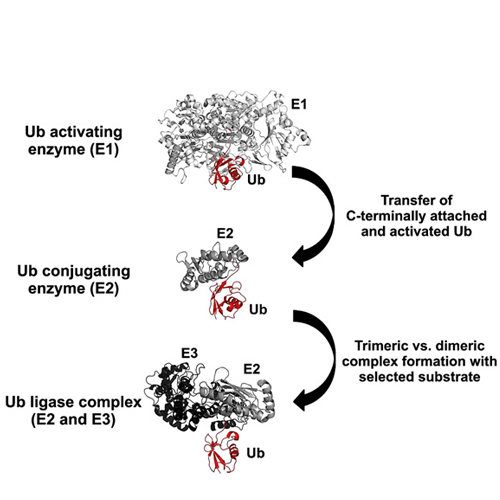Applied techniques for mining natural proteasome inhibitors
01-Jan-2014
Biochimica et Biophysica Acta, 2014, http://dx.doi.org/10.1016/j.bbamcr.2013.01.017, Volume 1843, Issue 1,Pages 26–38 published on 01.01.2014
In eukaryotic cells, the ubiquitin–proteasome-system (UPS) is responsible for the non-lysosomal degradation of proteins and plays a pivotal role in such vital processes as protein homeostasis, antigen processing or cell proliferation. Therefore, it is an attractive drug target with various applications in cancer and immunosuppressive therapies. Being an evolutionary well conserved pathway, many pathogenic bacteria have developed small molecules, which modulate the activity of their hosts' UPS components. Such natural products are, due to their stepwise optimization over the millennia, highly potent in terms of their binding mechanisms, their bioavailability and selectivity. Generally, this makes bioactive natural products an ideal starting point for the development of novel drugs. Since four out of the ten best seller drugs are natural product derivatives, research in this field is still of unfathomable value for the pharmaceutical industry. The currently most prominent example for the successful exploitation of a natural compound in the UPS field is carfilzomib (Kyprolis®), which represents the second FDA approved drug targeting the proteasome after the admission of the blockbuster bortezomib (Velcade®) in 2003. On the other hand side of the spectrum, ONX 0914, which is derived from the same natural product as carfilzomib, has been shown to selectively inhibit the immune response related branch of the pathway. To date, there exists a huge potential of UPS inhibitors with regard to many diseases. Both approved drugs against the proteasome show severe side effects, adaptive resistances and limited applicability, thus the development of novel compounds with enhanced properties is a main objective of active research. In this review, we describe the techniques, which can be utilized for the discovery of novel natural inhibitors, which in particular block the 20S proteasomal activity. In addition, we will illustrate the successful implementation of a recently published methodology with the example of a highly potent but so far unexploited group of proteasome inhibitors, the syrbactins, and their biological functions. This article is part of a Special Issue entitled: Ubiquitin–Proteasome System. Guest Editors: Thomas Sommer and Dieter H. Wolf.











